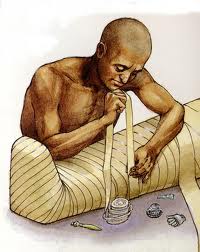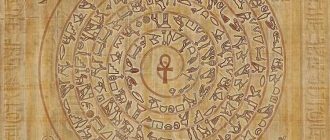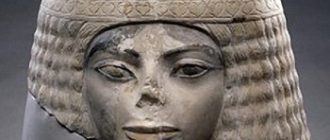Want to learn about Egyptian embalming? Read on to discover the art of mummification or Egyptian embalming…
Egyptian Mummification is a sacred art that was utilized to prepare the bodies of dead Egyptians for the afterlife. The city of Per – Nefer was considered to be protected by the Goddess called the Egyptian Wadjet and this was the town where her oracle rested in the sacred temple which is dedicated to commemorate her power and patronage of this Egyptian city. The embalming was carried out in the city of Per – Nefer and proper preparations were made to prepare the body for mummification.
Practice of Mummification and Egyptian Embalming
The process began by laying the body of the deceased person on a wooden table. This was followed by an extraction of the brain. In order to get to the brain, the Egyptian embalmers used a hammer to chisel through the bone of the nose and reach the cranium. By using a long and sleekly crafted iron hook, they were able to slowly pull out the brain from the nasal cavity. After the major brain matter was pulled out in this manner a spoon was utilized to carefully scrape out any remaining brain material from the skull cavity. Following this the skull of the deceased person was rinsed with water and purified. An interesting fact about Egyptian mummification is that the brain as an organ was not clearly understood by the Egyptians and therefore not preserved.
Extraction Of Organs From The Torso For Egyptian Embalming
The sacred stone of obsidian was utilized to make a long and neat incision throughout the left side of the body. From this slit each of the abdominal organs was carefully extracted and placed aside. Another interesting fact is that the kidneys were not considered important by the Egyptian embalmers. Once the abdominal organs were removed this was followed by the slitting of the diaphragm and removal of the lungs of the deceased person.
The heart was never extracted from the body because it was considered to be the core of the deceased person whom the heart belonged to and believed to function as the center of emotions and thought. All the other extracted organs were cleansed with water and then covered with resin. After this the organs were wrapped in fine strips of linen cloth and stored in decorated jars which were created specifically for the purpose of transporting and protecting the organs for their passage into the after life. These jars were called canopic jars by Egyptologist.
Preparing the Nearly Empty Body for Egyptian Embalming
After the removal of the organs from the torso of the deceased the chest cavity was rinsed with the wine of Palm to purify it completely. To retain the shape of the body the cavity was stuffed with different materials as well as incense to keep it fragrant and fresh. This was followed by drying out the body and wrapping it in linen strips to complete the embalming process.
There was a lot of attention given to royalty and the elite class by the Egyptian embalmers who took great care in carefully extracting the organs and making neat surgical incisions on their bodies. However, if they were not adequately rewarded for their efforts by people who could not afford the exorbitant charges then they utilized the technique of filling the body of the deceased with a unique oil mixture that dissolved all the organs and flowed out after several days of working on the organs.





